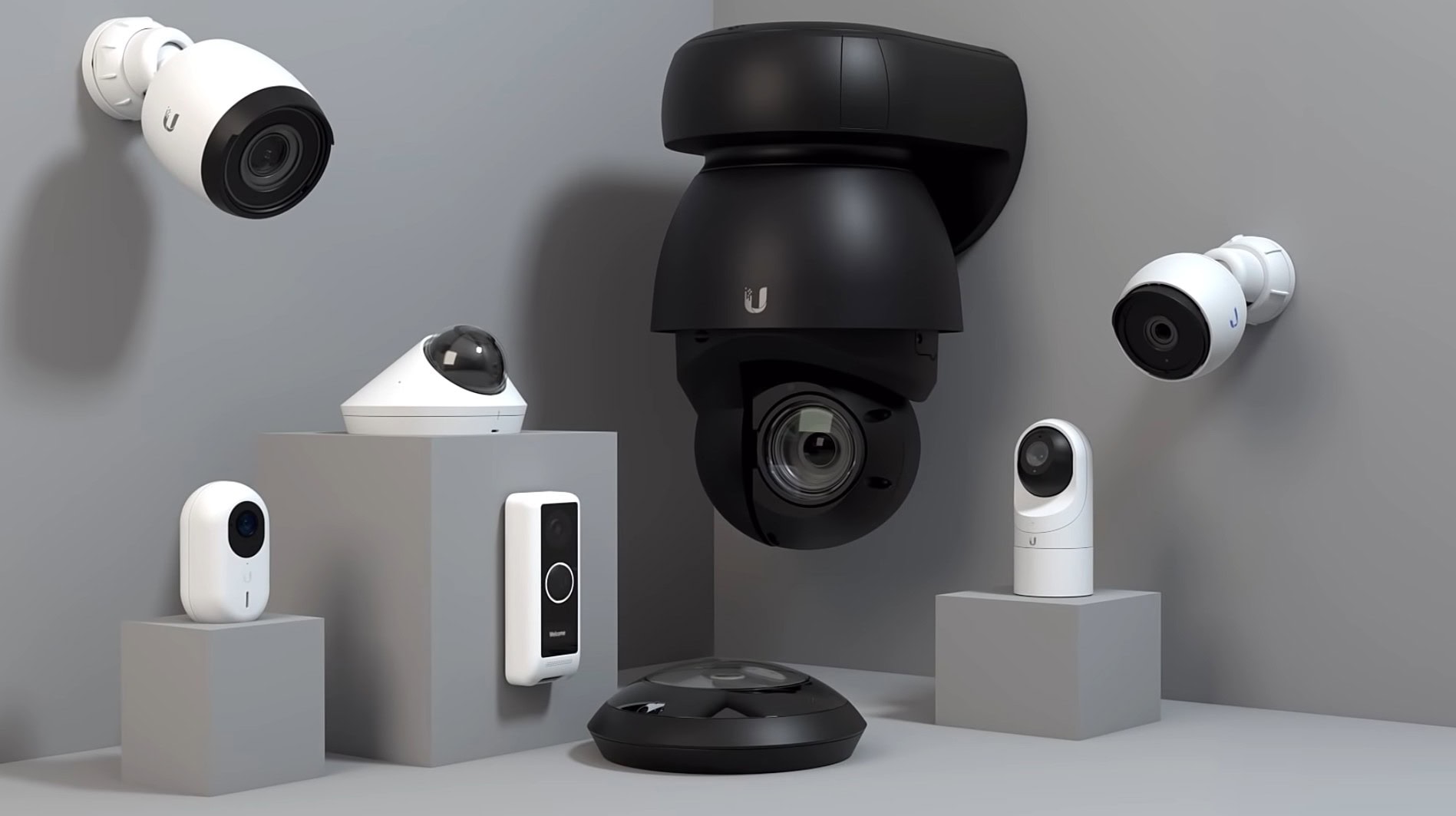Recent findings have revealed significant security vulnerabilities in Ubiquiti’s line of cameras and routers, affecting over 20,000 devices worldwide. These vulnerabilities expose users to a range of cyber threats, including amplification attacks and privacy risks. This article provides an in-depth analysis of the issues identified, the potential impact on users, and the measures that can be taken to mitigate these risks.
Table of Contents
Overview of the Vulnerabilities
The vulnerabilities identified in Ubiquiti’s cameras and routers primarily relate to two significant issues: amplification attacks and privacy risks. These vulnerabilities are present in various models of Ubiquiti’s UniFi cameras and routers, which are widely used in both residential and commercial settings.
Amplification Attacks
Amplification attacks exploit the inherent design of certain network protocols to increase the volume of traffic sent to a target, overwhelming it and causing a denial of service (DoS). In the context of Ubiquiti devices, these attacks leverage the Ubiquiti Discovery Protocol (UDP 10001), which allows unauthenticated requests to be amplified significantly, creating a substantial threat.
Privacy Risks
Privacy risks associated with these vulnerabilities stem from the ability of attackers to gain unauthorized access to sensitive information. Ubiquiti cameras, designed for surveillance and security, can be turned into tools for espionage if compromised. Attackers can potentially access live feeds, recorded footage, and other personal data, posing a significant threat to user privacy.
Detailed Analysis of Amplification Attacks
Amplification attacks are a form of Distributed Denial of Service (DDoS) attack, where attackers exploit vulnerabilities in network protocols to amplify the volume of traffic directed at a target. This section provides a detailed analysis of how these attacks are executed and their implications for Ubiquiti users.
How Amplification Attacks Work
Amplification attacks involve sending a small amount of data to a vulnerable server, which then responds with a much larger amount of data to the victim’s IP address. This results in a flood of traffic that can overwhelm the victim’s network, rendering it inoperable.
- Initiation: The attacker sends a request to a vulnerable Ubiquiti device using the Ubiquiti Discovery Protocol. This request is typically small but crafted to solicit a large response.
- Amplification: The Ubiquiti device responds with a much larger packet of data. The amplification factor can be significant, with some cases resulting in a response that is 30 to 50 times larger than the original request.
- Impact: The amplified traffic is directed towards the target, causing network congestion, service disruption, and potential outages.
Ubiquiti’s Vulnerable Protocol
The Ubiquiti Discovery Protocol (UDP 10001) is intended for device discovery and management. However, its lack of authentication and rate limiting makes it susceptible to abuse in amplification attacks.
- Lack of Authentication: The protocol does not require authentication, allowing attackers to send requests without verifying their identity.
- Absence of Rate Limiting: The protocol does not impose restrictions on the number of requests that can be sent, enabling attackers to flood the network with traffic.
- High Amplification Factor: The protocol’s design allows for a high amplification factor, making it an attractive target for attackers seeking to maximise their impact.
Real-World Implications
The vulnerabilities in Ubiquiti devices have real-world implications for users and organisations:
- Denial of Service: Amplification attacks can result in prolonged service disruptions, affecting business operations and critical infrastructure.
- Network Congestion: The increased traffic can lead to network congestion, affecting the performance of other devices and services.
- Financial Losses: Businesses may incur significant financial losses due to downtime, lost productivity, and the cost of mitigating attacks.
Privacy Risks and Exploitation
In addition to amplification attacks, Ubiquiti devices are also vulnerable to privacy risks. Attackers can exploit these vulnerabilities to gain unauthorized access to sensitive information, compromising user privacy and security.
Unauthorized Access to Camera Feeds
Ubiquiti cameras are designed for security and surveillance, providing users with live feeds and recorded footage. However, vulnerabilities in these devices can allow attackers to access camera feeds without authorization.
- Live Feed Access: Attackers can potentially gain access to live camera feeds, allowing them to monitor user activities in real-time.
- Recorded Footage: Access to recorded footage poses a significant privacy risk, as attackers can view and download sensitive content.
- Privacy Violations: Unauthorized access to camera feeds can result in severe privacy violations, particularly in residential settings where cameras are used for home security.
Data Theft and Espionage
The vulnerabilities in Ubiquiti devices can also facilitate data theft and espionage, posing a significant threat to users and organisations.
- Personal Data Theft: Attackers can access personal data stored on Ubiquiti devices, including user credentials, network configurations, and other sensitive information.
- Corporate Espionage: In commercial settings, attackers can exploit vulnerabilities to gain access to confidential business information, facilitating corporate espionage.
- National Security Risks: In critical infrastructure settings, compromised Ubiquiti devices can pose national security risks, allowing attackers to gain access to sensitive information and systems.
Vulnerability Discovery and Reporting
The discovery of these vulnerabilities in Ubiquiti devices highlights the importance of ongoing security research and responsible vulnerability reporting. This section provides an overview of how these vulnerabilities were discovered and the steps taken to address them.
Research and Discovery
The vulnerabilities in Ubiquiti devices were identified by security researchers who conducted extensive analysis and testing. These researchers utilised various methods to identify and exploit weaknesses in the devices, ultimately uncovering the amplification and privacy risks.
- Network Analysis: Researchers analysed network traffic to identify patterns and anomalies that could indicate vulnerabilities.
- Protocol Inspection: By examining the Ubiquiti Discovery Protocol, researchers identified weaknesses in its design and implementation.
- Exploit Testing: Researchers conducted controlled exploit tests to determine the feasibility and impact of potential attacks.
Responsible Disclosure
Upon discovering the vulnerabilities, researchers followed responsible disclosure practices to ensure that Ubiquiti was informed of the issues and given an opportunity to address them before public disclosure.
- Notification: Researchers notified Ubiquiti of the vulnerabilities, providing detailed information and recommendations for remediation.
- Collaboration: Researchers collaborated with Ubiquiti to develop and test patches and updates to mitigate the vulnerabilities.
- Public Disclosure: After Ubiquiti released patches and updates, researchers publicly disclosed the vulnerabilities to raise awareness and encourage users to apply the fixes.
Ubiquiti’s Response
In response to the discovered vulnerabilities, Ubiquiti took several steps to address the issues and protect users.
- Patches and Updates: Ubiquiti released patches and firmware updates to address the vulnerabilities and enhance the security of affected devices.
- User Education: Ubiquiti provided guidance and resources to help users understand the vulnerabilities and implement security measures.
- Ongoing Security Efforts: Ubiquiti committed to ongoing security efforts, including regular vulnerability assessments and improvements to its security practices.
Mitigation Strategies and Best Practices
To protect against amplification attacks and privacy risks, users of Ubiquiti devices are encouraged to implement the following mitigation strategies and best practices.
Applying Patches and Updates
One of the most effective ways to mitigate vulnerabilities in Ubiquiti devices is to apply patches and firmware updates provided by Ubiquiti.
- Regular Updates: Users should regularly check for and apply updates to ensure their devices are protected against known vulnerabilities.
- Automatic Updates: Enabling automatic updates can help ensure that devices receive the latest security patches as soon as they are available.
- Verification: After applying updates, users should verify that the devices are functioning correctly and that the vulnerabilities have been addressed.
Network Security Measures
In addition to applying patches and updates, users can implement network security measures to protect against attacks.
- Firewall Configuration: Configuring firewalls to block unauthorized access and restrict traffic can help prevent attacks.
- Intrusion Detection Systems: Implementing intrusion detection systems can help identify and mitigate potential threats in real-time.
- Network Segmentation: Segregating networks can help contain attacks and prevent the spread of malicious traffic.
Device Configuration and Hardening
Proper configuration and hardening of Ubiquiti devices can significantly reduce the risk of exploitation.
- Disable Unused Services: Disabling unused services and protocols can reduce the attack surface and limit opportunities for exploitation.
- Authentication and Encryption: Implementing strong authentication and encryption mechanisms can help protect against unauthorized access.
- Regular Audits: Conducting regular audits and assessments of device configurations can help identify and address potential vulnerabilities.
User Awareness and Training
User awareness and training are critical components of a comprehensive security strategy.
- Security Awareness Training: Providing security awareness training to users can help them recognise potential threats and adopt secure practices.
- Phishing Prevention: Educating users about phishing attacks can help prevent social engineering attacks that target user credentials.
- Incident Response: Establishing an incident response plan can help organisations respond effectively to security incidents and minimize their impact.
Future Considerations and Recommendations
The discovery of vulnerabilities in Ubiquiti devices underscores the
importance of continuous improvement in security practices and the need for proactive measures to protect against evolving threats. This section outlines future considerations and recommendations for Ubiquiti, users, and the broader security community.
Ubiquiti’s Role in Enhancing Security
As a leading provider of networking solutions, Ubiquiti has a responsibility to prioritise security and ensure that its products are safe and reliable.
- Security by Design: Ubiquiti should adopt a security-by-design approach, integrating security considerations into the development process from the outset.
- Regular Vulnerability Assessments: Conducting regular vulnerability assessments can help identify and address potential security issues before they are exploited.
- User Collaboration: Ubiquiti should collaborate with users and the security community to gather feedback and improve security practices.
User Responsibility and Best Practices
Users also have a role to play in ensuring the security of their devices and networks.
- Proactive Security Measures: Users should adopt proactive security measures, including regular updates, network security practices, and device configuration.
- Vulnerability Reporting: Reporting potential vulnerabilities to Ubiquiti and other vendors can help improve security and protect against emerging threats.
- Community Engagement: Engaging with the security community can provide users with valuable insights and resources for improving their security posture.
The Role of the Security Community
The security community plays a crucial role in identifying and addressing vulnerabilities, and its efforts should be supported and encouraged.
- Collaborative Research: Collaboration between researchers, vendors, and users can lead to more effective vulnerability discovery and mitigation efforts.
- Responsible Disclosure Practices: Following responsible disclosure practices ensures that vulnerabilities are addressed before they are exploited.
- Security Awareness and Education: Promoting security awareness and education can help users and organisations better understand and mitigate security risks.
Conclusion
The vulnerabilities discovered in Ubiquiti cameras and routers highlight the ongoing challenges in securing network devices and the importance of proactive measures to protect against amplification attacks and privacy risks. By understanding the nature of these vulnerabilities and implementing appropriate security measures, users can significantly reduce their risk and protect their networks and data.
Ubiquiti’s response to these vulnerabilities demonstrates the importance of collaboration between vendors, researchers, and users in addressing security challenges. By continuing to prioritise security and adopt best practices, Ubiquiti and its users can work together to enhance the safety and reliability of their products and networks.
In a rapidly evolving threat landscape, vigilance and proactive measures are essential to protect against emerging threats and ensure the security and privacy of users worldwide.




